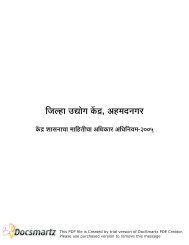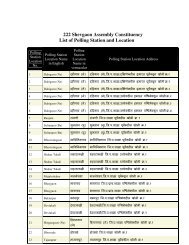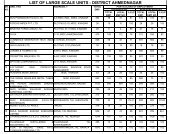1. INTRODUCTION
1. INTRODUCTION
1. INTRODUCTION
Create successful ePaper yourself
Turn your PDF publications into a flip-book with our unique Google optimized e-Paper software.
· Receive all recommended vaccinations, inoculations and encourage the neighbours to help<br />
health authorities to prevent spread of epidemics<br />
· Avoid stockpiling preventive medicines at family level. This may create a severe shortage<br />
of essential drugs.<br />
· Take extra-care in disposal of family waste and also assist in community efforts in disposal<br />
of waste<br />
· Keep in constant touch with epidemic information and public health staff in the area<br />
4.2 During the Epidemic<br />
· Report any symptoms to the health authorities immediately<br />
· Understand if there is a need for quarantine<br />
· Understand the nature of treatment and possible emergencies<br />
· Do not leave the epidemic area without a clearance from the health authorities<br />
· Report arrival of any guests from the epidemic area<br />
· Discourage relatives and friends from outside epidemic area to visit your areas<br />
· Understand the steps to be taken in the disposal of personnel belongings of the patient<br />
including disposal of excreta<br />
· Understand the procedure for disposal of the dead body of the epidemic victim<br />
5. Road Accidents :<br />
[In addition to what has been listed under family preparedness as a generic response, road<br />
accidents demand specific preparedness and responses. Given below are the preparedness<br />
measures and responses which are specific to road accidents].<br />
Road Accidents are a major killer and take place without any warning. Accidents may<br />
involve passenger vehicles, goods vehicles, vehicles carrying hazardous and toxic materials.<br />
The damage therefore may involve injuries and deaths, chemical spills, fires or release of<br />
toxic gases.<br />
5.1 On accident event (involving passenger vehicle)<br />
Those at the accident site should follow the following priorities<br />
· Look for and rescue the injured or those trapped in the vehicles<br />
· Arrange for transport of the injured to the nearest medical care centre<br />
· Place the dead bodies on one side to avoid obstructions<br />
· Organise locally traffic control using the available manpower to avoid traffic jams<br />
Discourage people from crowding near the accident spot.<br />
· Discourage people from looting the goods from the accident vehicle. Arrange to inform the<br />
nearest traffic police post through passing vehicles on either side<br />
5.2 On accident event (involving hazardous and toxic elements)<br />
· Do not go anywhere near the accident spot unless the hazardous and toxic elements are<br />
properly understood and discourage others. The contents may explode or catch fire<br />
· Prevent people at the accident site from lighting of matches for cigarettes etc.<br />
· Discourage people from collecting the spills from the accident vehicle as the chemicals<br />
might be deceptive and lead to toxic exposure or explosions<br />
· Arrange to inform the nearest traffic police/fire brigade through passing vehicles<br />
· Identify the wind direction and move in the opposite direction<br />
· Do not allow any traffic congestion near the accident spot<br />
C:\DOCUME~1\ADMINI~1\LOCALS~1\Temp\C.Lotus.Notes.DataRevised Grain Bank


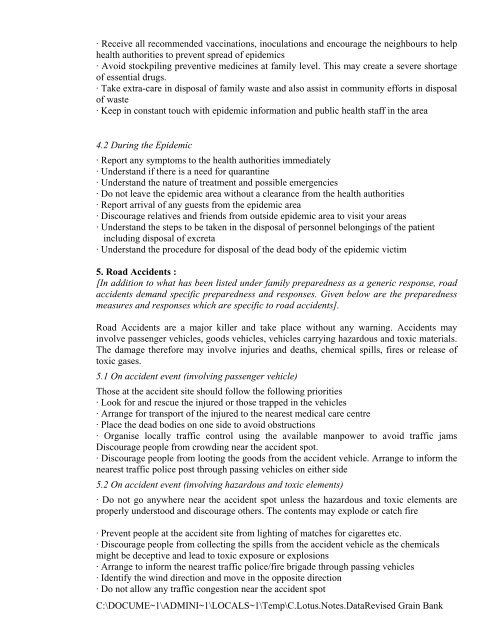
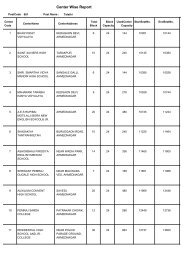
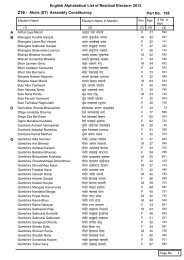
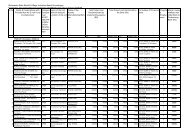
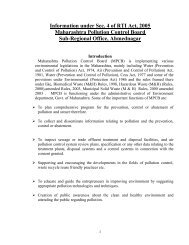
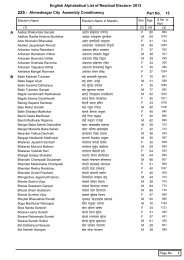

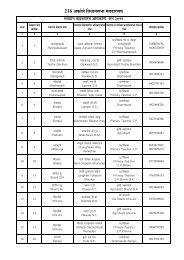
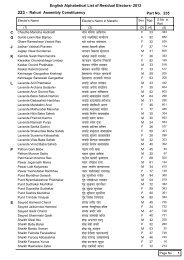
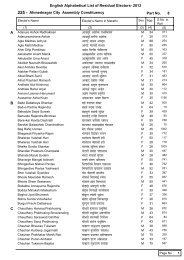
![216 - +ÃŪúÃä]äõ ĶÃŪúià ĶÃÃ>ðŪúÃÄ«Ã +ÃŪúÃä]äõ EÅÃÄÄ·ÃĪÃÃ](https://img.yumpu.com/36478022/1/184x260/216-aaaaaaau-aaaaia-aaaaaaaaa-aaaaaaau-eaaaaaaaa.jpg?quality=85)
